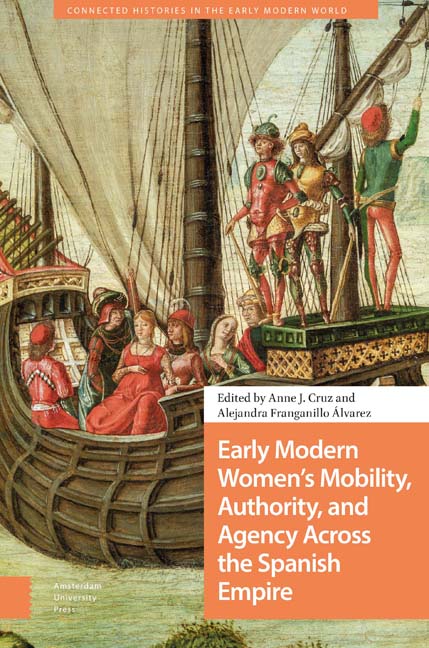8 - Seeking Support from the Spanish Monarchy : The Manly Flight of Mary Stuart O’Donnell, Countess of Tyrconnell
Published online by Cambridge University Press: 08 May 2024
Summary
Abstract
In 1627, the Irish noble Mary Stuart O’Donnell, daughter of the earl of Tyrconnell, fled in male attire from England to Flanders to seek asylum and financial support from the Spanish crown. The countess's flight amazed and amused the Brussels court, where there circulated a book about her fascinating crossing. Its author constructed a carefully conceived image of Mary as a martyr and pious Catholic crusader that, however, failed to relate her real-life experiences. This chapter investigates the countess's travels as a journey that despite its adventurous legend, proved ineffective in regaining her heritage. Her refusal to submit to the Gaelic leaders and the Spanish Monarchy resulted in a penurious life dependent on continuously petitioning the Spanish crown and Rome.
Keywords: Mary Stuart O’Donnell, Flight of the Earls, Irish Catholics, England–Ireland relations, Spanish Netherlands, early modern women
On January 30, 1627, the Franciscan Florence Conry, archbishop of Tuam, Ireland, asked Archduchess Isabel Clara Eugenia, governor of the Spanish Netherlands, to shelter the Irish noble Mary Stuart O’Donnell (1607–?), daughter of the earl of Tyrconnell. Mary Stuart had arrived on her lands “in a very unusual fashion” from the court of Charles I in London: “It would be well that her Highness shelter her in the Palace, as this is demanded by her birth and her age, and by the absence of the Earl” (Jennings 1964, 215). Shortly thereafter, the archduchess, following the recommendations of the Irish archbishop, who was representative for Irish affairs of the Spanish crown, welcomed the young fugitive with open arms into her court. Yet despite her initial welcome, the young countess of Tyrconnell became a perpetual refugee and faced a life full of hardships, forcing her to become an expert in survival tactics.
The lives and fortunes of Mary Stuart and the archduchess could hardly be more dissimilar. Nonetheless, history and literature converge when discussing these two women from different generations and countries in a historical moment marked by international conflicts. Both were transformed into symbols of continuity between the past and the future of their respective kingdoms: as a widow Isabel Clara Eugenia was, in Werner Thomas's view, “the personification of the transition from the archducal regime to the reincorporation of the country into the Spanish empire” (2012, 185) and hence the best guarantee of the house of Habsburg in the Southern Netherlands.
- Type
- Chapter
- Information
- Publisher: Amsterdam University PressPrint publication year: 2024

